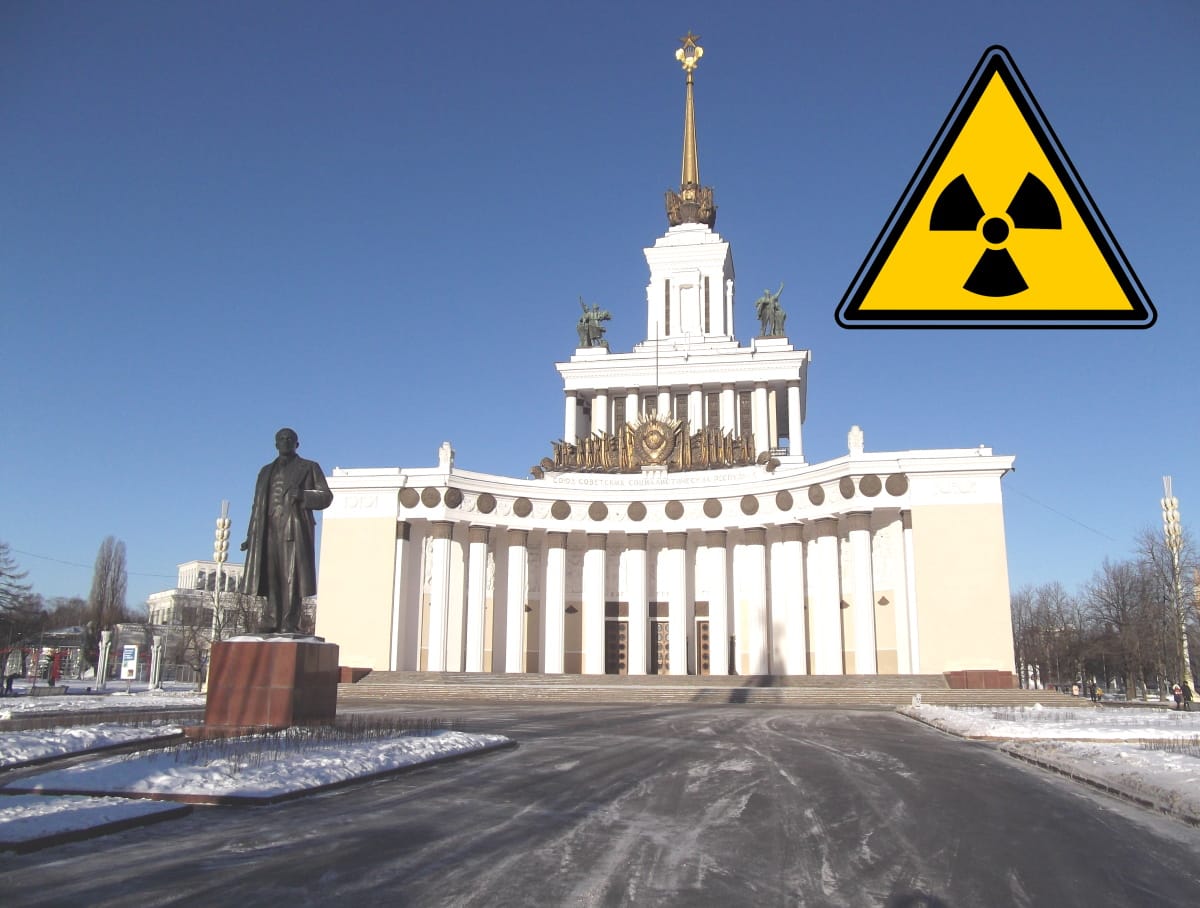In a number of sources you can read that in the 1950s and 1960s, at the main Soviet exhibition, it was possible to observe the operation of a real nuclear reactor at close range. We checked whether everything really happened like that.
As some report resources, in the second half of the 1950s, a pavilion dedicated to the peaceful atom was opened on the territory of VDNKh (then VSKhV): “Visitors were shown measuring instruments, a collection of uranium ores, radiological protection equipment and models of installations for thermonuclear research. The central hall housed an operating nuclear reactor using uranium-235 with a power of 100 kW. For clarity, the reactor was open, and visitors could observe the Cherenkov effect - a characteristic blue glow in the water column produced by a nuclear reaction.” In addition to the media and social networks, you can also find out about this at “Yandex.Zene" and to "Peekaboo"
The Rosatom Corporation can be considered the most authoritative and professional source on the issue of nuclear facilities in the Russian Federation. In June 2020, in the midst of the construction of the Atom pavilion at VDNKh, dedicated to various applications of nuclear technologies, a historical reference: “In 1954, pavilion No. 62 was built on Lipovaya Alley (VSKhV - Ed.), which was called “Building Materials” (authors - architects G. I. Lutsky and L. I. Lopovok, engineer S. G. Krivin). In 1956, it began to be called “Atomic Energy for Peaceful Purposes,” after the name of the exposition organized as part of the All-Union Industrial Exhibition. Radiometric measuring instruments, a collection of uranium ores, radiological protection equipment, and mock-ups of installations for thermonuclear research were demonstrated here. In November 1960, the exhibition “Application of Radioactive Isotopes for Control and Automation of Production Processes” was organized in the pavilion. In 1961, the exhibition “Nuclear Physics, Dosimetric and Radiometric Equipment” opened. During the exhibition period, scientific lectures, seminars and consultations with specialists were organized in the pavilion. From 1956 to 1963, the pavilion housed the main exhibit - an operating uranium-235 nuclear reactor with a power of 100 kW. Visitors to the pavilion could observe the Cherenkov effect - a characteristic blue glow in the water column produced by a nuclear reaction. Next to the reactor there was an exhibition section “Radiation Protection and Occupational Safety”. In those years, the “atomic” pavilion became a mandatory part of excursion programs for foreign delegations. In 1959, the atomic exhibition expanded to include the areas of the neighboring pavilion No. 61. And in 1964, the exhibition of two pavilions moved to the building of pavilion No. 71, formerly the RSFSR Pavilion. The reactor was dismantled during the move, and pavilion No. 62 received a new name - "Light Industry" (since 1967 - "Health Protection"). In pavilion No. 71, among the exhibits were models of nuclear reactors and nuclear installations, demonstrating the principles of operation of nuclear power plants and nuclear icebreakers. In the recent history of VDNKh, Pavilion No. 71 housed the Palace of Public Services “My Documents,” and Pavilion No. 62 housed the International Ballet Center.”
As you can see, the part of the description dedicated to the reactor almost verbatim repeats the texts distributed on the Internet. Yes and official VDNH website reports: so that “visitors could better see the operation of the reactor, it was assembled without a protective casing.” Judging by photos, the reactor aroused great interest among visitors.
Moreover, excerpts from the official brochuresdedicated to the exhibition. From them we can find out that the necessary security measures were still observed. Thus, the layer of water mentioned above above the reactor core was 4.6 m thick and served as protection against radiation. Due to circulation and passage through the ion exchange filter, the amount of radioactive nitrogen floating into the upper layers of water was very low. In addition, there were two rods that served as emergency protection. Finally, with the help of dosimetric instruments equipped with sound alarms, the level of radiation above the surface of the water was continuously monitored and the air in the reactor hall was analyzed.
AND in short about the Vavilov-Cherenkov effect. It is a glow caused in a transparent medium by a charged particle moving at a speed exceeding the phase speed of light in this medium. In the case of the described nuclear reactor, when uranium atoms decayed, some particles flew out at speeds exceeding the speed of light in water. This gave visitors to the All-Russian Agricultural Exhibition the opportunity to observe the spectacular blue glow.
Thus, the statement in the title is true. Until 1963, the pavilion housed not a model, but a fully operational nuclear reactor.
Is it true
Read on topic:
1. Atomic Energy for Peaceful Purposes (1956)
If you find a spelling or grammatical error, please let us know by highlighting the error text and clicking Ctrl+Enter.






